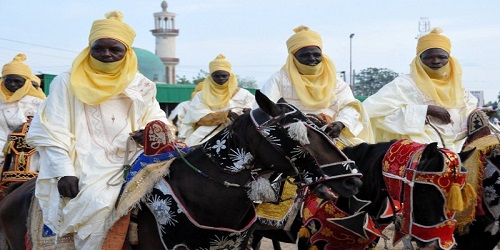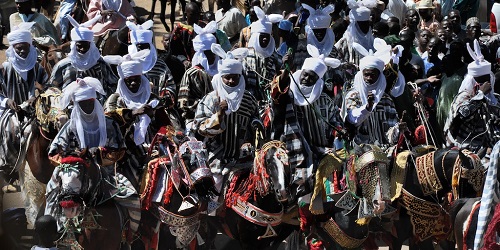
Roaring muskets flash salutes as thousands of warrior horsemen race onto a dusty parade ground in front of the Emir’s palace marking the start the annual Durbar festivals in Northwestern Nigeria. Horseman clad in colorful robes, indigo turbans, ostrich feathers and glistening swords honor their Emir who enters the parade shielded from the sun by a massive twirling parasol.
It is the season for the Durbar!
The procession is strictly men only dressed in magnificent turbans many with one ‘ear’ or two sticking out denoting their royal linage. Young and old participate to insure that tradition is observed through generations. All approach the viewing stands raising their fist and shout “Ranka ya Dede”, proudly proceeding to line the sides of the parade ground. Rhythms of the talking and traditional drums fill the air with the shrill of trumpeters and fluters. Acrobats flip and catch one another, musicians, warriors riding brightly armored horses make their way to assemble along the parade grounds. When hundreds of horsemen are on the parade grounds, the Emir’s procession begins down the center, including his guards, his sons, riderless horses for his wives, and camels.

Finally, the Emir himself rides among his guards and servants amidst the shooting of flintlock muskets. The Emir is immediately recognized, veiled and clad in white with a huge fanning parasol lifts up and down over him. After he pays respect to the governor, the horse regiments race up to the Emir at a gallop to demonstrate their courage, agility, and respect. The Emir gives an Eid el-Kabir address to the crowd’s approval.




